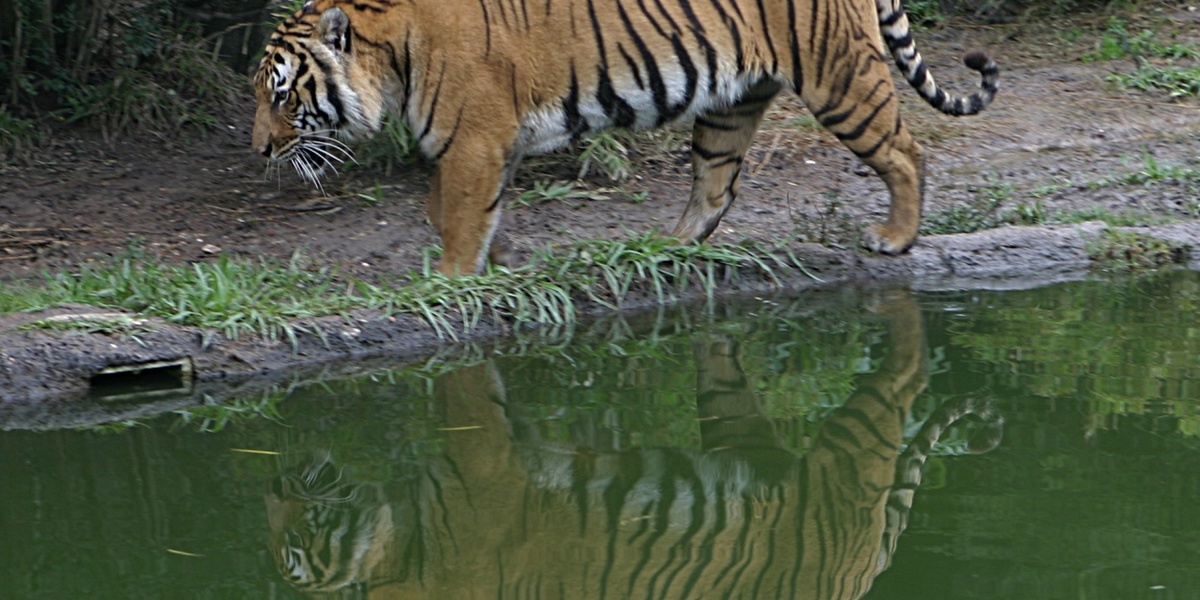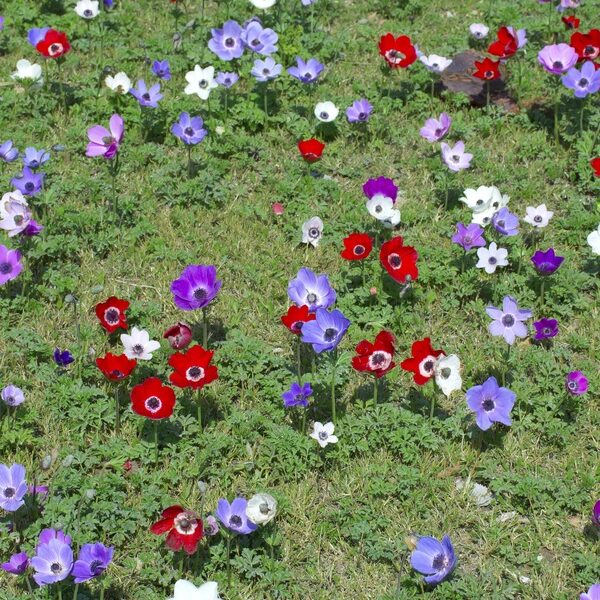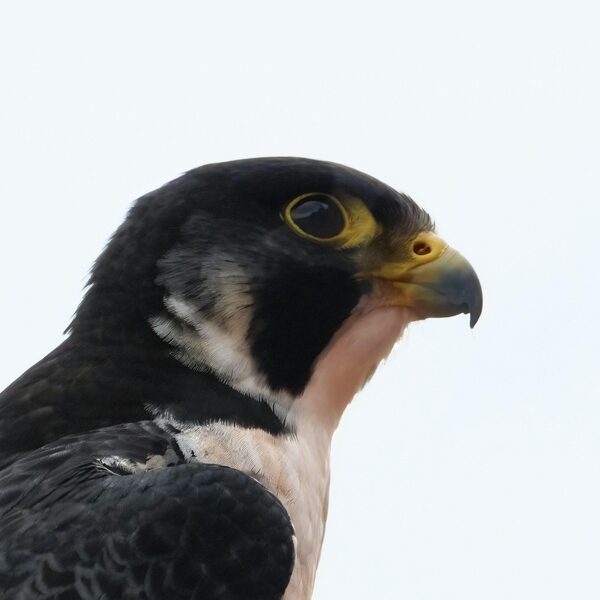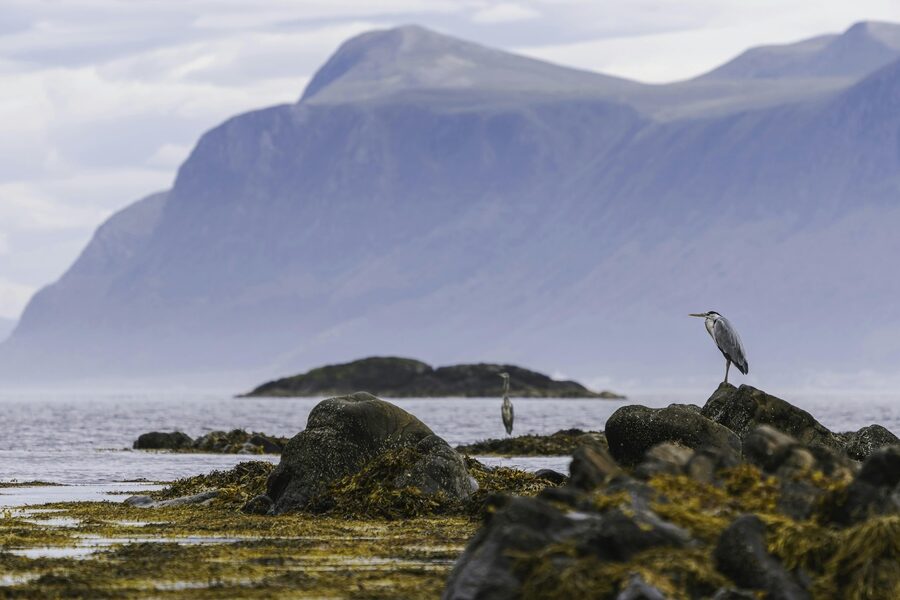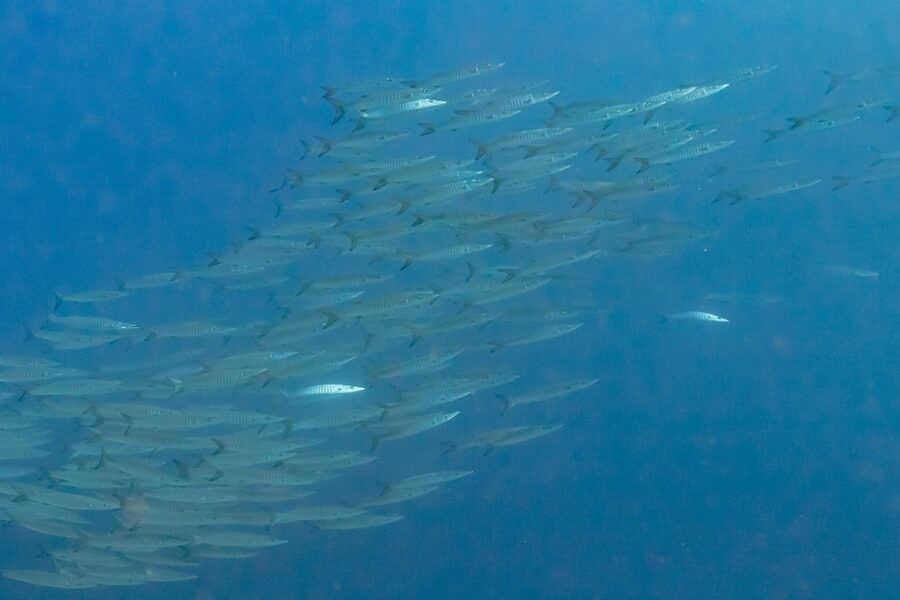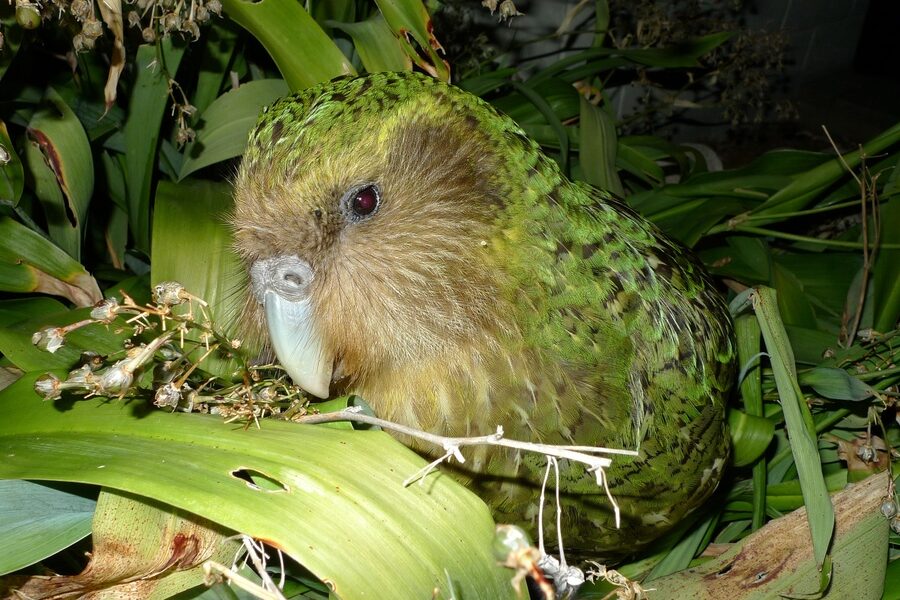Vietnam’s varied habitats—from the Annamite Range and karst outcrops to coastal wetlands and lowland forests—hold a remarkable mix of wildlife, but many species are under pressure from habitat loss, hunting and infrastructure development. Understanding which animals are at greatest risk helps prioritize conservation and public awareness.
There are 24 Endangered Species in Vietnam, ranging from Annam pond turtle to Vu Quang muntjac. For each species the list shows the columns Scientific name, IUCN status and Main range in Vietnam so you can quickly see taxonomy, risk level and distribution; you’ll find below.
How recent are the IUCN statuses used in this list?
The IUCN status reflects the most recent assessments available when the list was compiled, but Red List categories can change with new surveys; for the latest updates check the IUCN Red List entries for each species and recent peer-reviewed or government surveys from Vietnam.
How can I help protect these endangered species in Vietnam?
Support reputable conservation organizations working in Vietnam (for example national NGOs and international partners), avoid buying wildlife products, consider responsible ecotourism that funds habitat protection, and share verified sightings or concerns with researchers or local conservation projects to aid monitoring and recovery efforts.
Endangered Species in Vietnam
| Common name | Scientific name | IUCN status | Main range in Vietnam |
|---|---|---|---|
| Saola | Pseudoryx nghetinhensis | CR (2018) | Annamite Mountains (central Vietnam) |
| Edwards’s pheasant | Lophura edwardsi | CR (2018) | Central Annamites (Quang Tri, Thua Thien‑Hue) |
| Tonkin snub‑nosed monkey | Rhinopithecus avunculus | CR (2016) | Northeast mountains (Ha Giang, Tuyen Quang) |
| Cat Ba langur | Trachypithecus poliocephalus | CR (2018) | Cat Ba Island (Hai Phong) |
| Delacour’s langur | Trachypithecus delacouri | CR (2015) | Northern limestone karsts (Ninh Binh, Ha Nam) |
| Annamite striped rabbit | Nesolagus timminsi | EN (2016) | Annamite Mountains (Central VN & Laos) |
| Sunda pangolin | Manis javanica | CR (2019) | Widespread lowland and hill forests, southern Vietnam |
| Chinese pangolin | Manis pentadactyla | CR (2019) | Northern and central forests and agricultural edges |
| Asian elephant | Elephas maximus | EN (2021) | Central highlands and southern forests (Dak Lak, Cat Tien regions) |
| Siamese crocodile | Crocodylus siamensis | CR (2018) | Freshwater wetlands and oxbows (Mekong Delta remnants) |
| Hawksbill turtle | Eretmochelys imbricata | CR (2018) | Coastal waters, nesting on islands (Phu Quoc, Con Dao) |
| Leatherback turtle | Dermochelys coriacea | CR (2016) | Offshore and some nesting sites on southern islands |
| Green turtle | Chelonia mydas | EN (2018) | Coastal foraging and nesting sites (Central & Southern VN) |
| Olive ridley turtle | Lepidochelys olivacea | VU (2016) | Coastal waters and occasional nesting beaches |
| Elongated tortoise | Indotestudo elongata | CR (2018) | Lowland and hill forests, fragmented populations |
| Annam pond turtle | Mauremys annamensis | CR (2015) | Central Vietnam wetlands and rivers (Thua Thien‑Hue) |
| Owston’s civet | Chrotogale owstoni | EN (2016) | Forest patches in southern and central Vietnam |
| Pygmy slow loris | Nycticebus pygmaeus | VU (2019) | Lowland and montane forests across Vietnam |
| Clouded leopard | Neofelis nebulosa | VU (2015) | Remaining lowland and hill forests, scattered records |
| Asian black bear | Ursus thibetanus | VU (2020) | Northern and central forests, remaining patches |
| Mekong giant catfish | Pangasianodon gigas | CR (2018) | Lower Mekong Basin, seasonal in Vietnam channels |
| Irrawaddy dolphin | Orcaella brevirostris | EN (2017) | Coastal estuaries and Mekong Delta waterways |
| Black‑shanked douc | Pygathrix nigripes | EN (2015) | Southern Annamites and adjacent lowland forests |
| Vu Quang muntjac | Muntiacus vuquangensis | EN (2008) | Annamite Mountains (Vu Quang area) |
Images and Descriptions
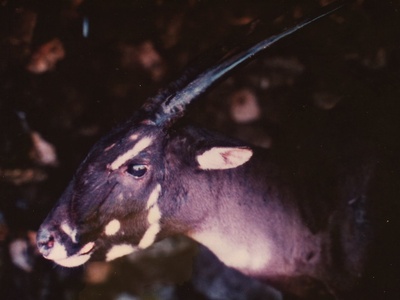
Saola
A rare, deer‑like bovine with short horns and faint markings, standing about 1 m at the shoulder. Threatened by snaring and habitat loss. Notable for being one of the world’s rarest large mammals, discovered only in 1992.
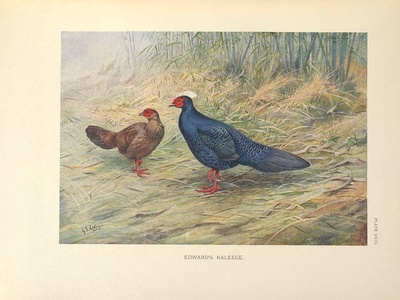
Edwards’s pheasant
A medium, glossy-blue pheasant with white crest; males are striking. Habitat loss and hunting drove dramatic declines. Famous as an emblem of central Vietnam’s forests and the subject of captive‑breeding and reintroduction efforts.
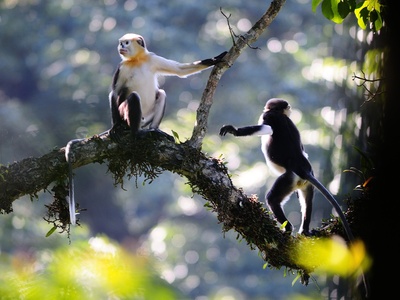
Tonkin snub‑nosed monkey
A distinctive primate with upturned nose and long fur, about 50–70 cm body length. Critically endangered from hunting and forest loss. Remarkable for its extremely restricted, fragmented range and charismatic conservation profile.
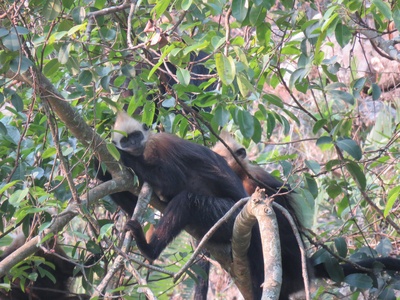
Cat Ba langur
A black‑faced, golden‑mantled leaf monkey, small groups of 20–70 individuals. Threatened by hunting and habitat loss. Notable as one of the world’s most threatened primates, restricted to a single island population.
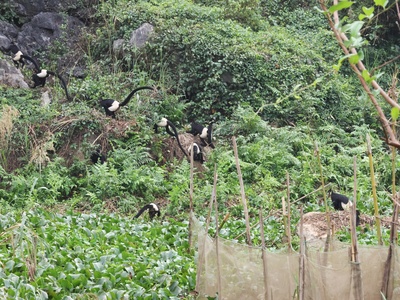
Delacour’s langur
A striking black-and-white langur with a white forehead; about 50–70 cm long. Habitat loss and hunting are major threats. Famous for surviving only in fragmented karst forests and intensive local conservation efforts.
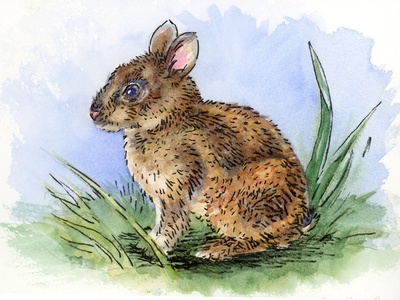
Annamite striped rabbit
A small, dark rabbit with bold pale stripes, nocturnal and secretive. Threatened mainly by hunting with snares. Remarkable as a species first described from remote camera‑trap images and still little known.
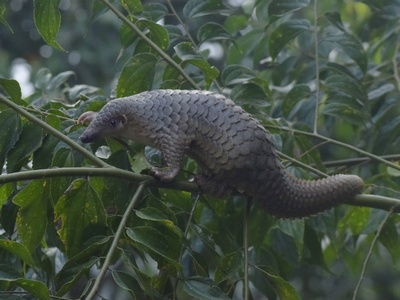
Sunda pangolin
A scaly, nocturnal insect‑eater about 40–70 cm long. Heavily poached for scales and meat. One of the most trafficked mammals globally; Vietnam is a major poaching and trade hotspot.
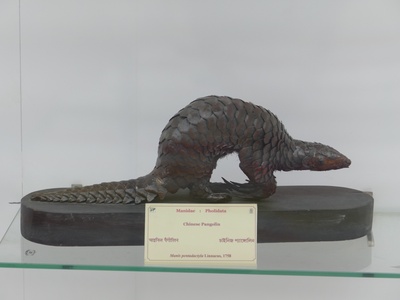
Chinese pangolin
Smaller than Sunda pangolin with overlapping scales; eats ants and termites. Critically endangered from intense poaching and habitat loss. Notable for severe population collapses across its range.
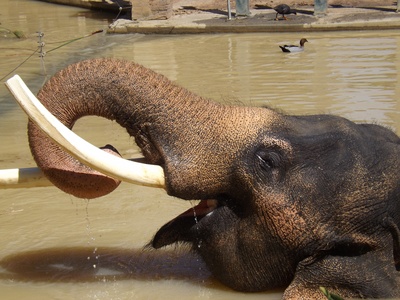
Asian elephant
A large herbivore up to 3 m tall, living in small, fragmented groups. Threatened by habitat loss, fragmentation and conflict with people. Iconic for its cultural and ecological roles in forest landscapes.
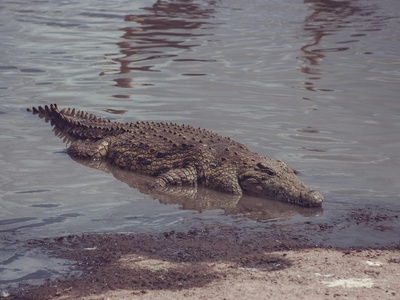
Siamese crocodile
A medium freshwater crocodile up to 3 m, now extremely rare. Main threats are hunting and wetland conversion. Notable for surviving only in a few remnant wild populations and captive reintroduction programs.
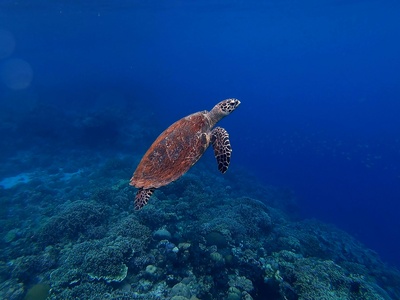
Hawksbill turtle
A small, colorful sea turtle with a narrow beaked snout and overlapping scutes. Critically endangered from illegal trade, egg collection and bycatch. Famous for its beautiful shell used in trade.
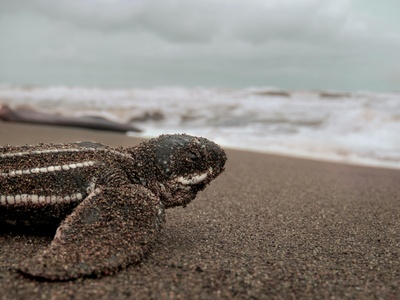
Leatherback turtle
The largest sea turtle, up to 2 m long, with leathery shell. Threatened by fisheries bycatch, egg loss and habitat change. Notable for long migrations and deep‑diving behavior.
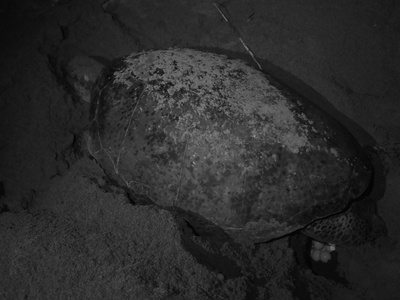
Green turtle
A large herbivorous sea turtle with a smooth shell, threatened by egg harvest, hunting and fisheries bycatch. Important as a legacy marine species and for maintaining seagrass ecosystems.
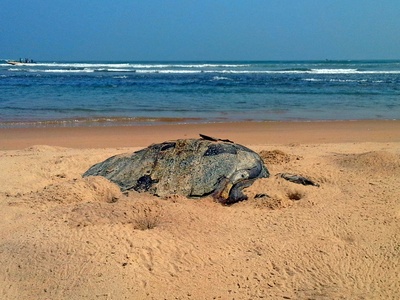
Olive ridley turtle
A small, gregarious sea turtle that nests in mass arribadas elsewhere; in Vietnam nests are scattered. Threatened by bycatch and egg harvest. Notable for strong pelagic migrations and synchronized nesting behavior elsewhere.
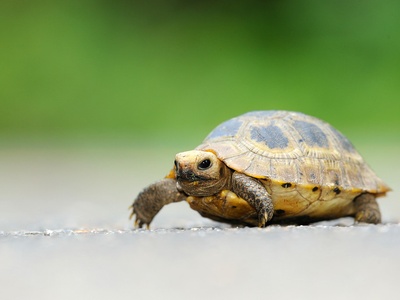
Elongated tortoise
A medium land tortoise with an elongated carapace up to 30–40 cm. Over‑collected for pet trade and food; habitat loss also severe. Notable as a slow‑reproducing reptile vulnerable to overexploitation.
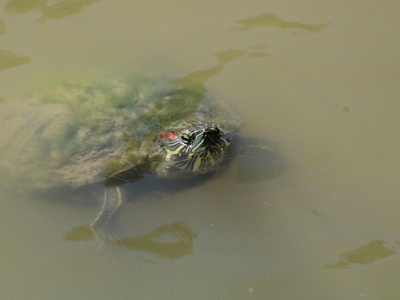
Annam pond turtle
A small freshwater turtle with patterned shell, formerly more widespread. Critically endangered from collection for trade and habitat degradation. Remarkable as a species once thought extinct in the wild.
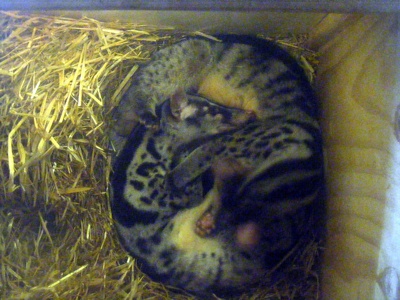
Owston’s civet
A small, nocturnal civet with spotted coat and long tail. Threatened by hunting and forest loss. Notable for its rarity and limited distribution in Indochinese forests.
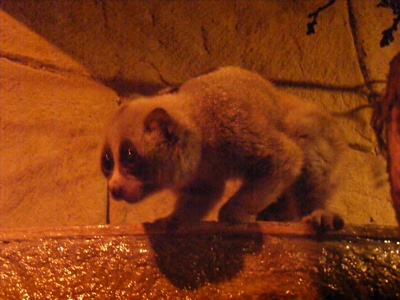
Pygmy slow loris
A small, slow primate with large eyes and a toxic bite; body ~25–35 cm. Threatened by pet trade and habitat destruction. Notable for its unique toxic saliva used in defense.
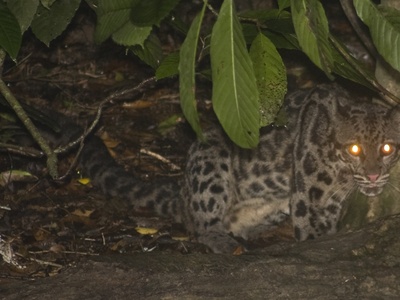
Clouded leopard
A medium forest predator with striking cloud‑patterned coat, about 50–90 cm body length. Threatened by habitat loss and poaching. Notable for arboreal hunting skills and elusive behavior.
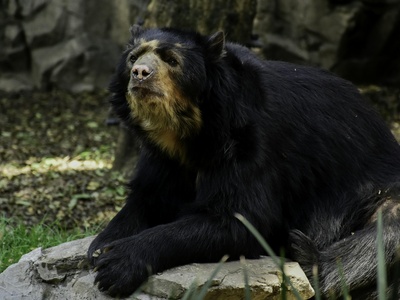
Asian black bear
A medium bear with a distinctive white chest patch. Suffer major poaching for bile and body parts, and habitat loss. Important culturally and ecologically as an apex omnivore in forest systems.
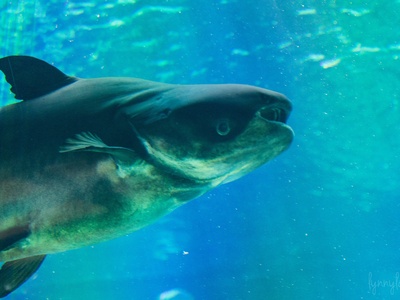
Mekong giant catfish
A huge freshwater fish reaching over 2 m; long‑lived and migratory. Critically endangered from overfishing and dam impacts. Iconic as one of the world’s largest freshwater fishes.
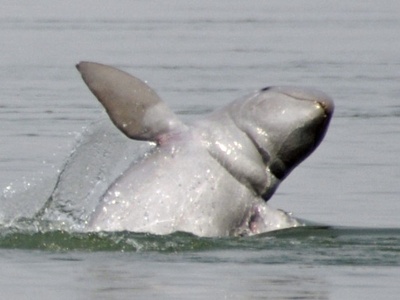
Irrawaddy dolphin
A small, blunt‑headed dolphin adapted to coastal and riverine life. Threatened by bycatch, habitat degradation and boat traffic. Notable for populations living in freshwater river systems like the Mekong.
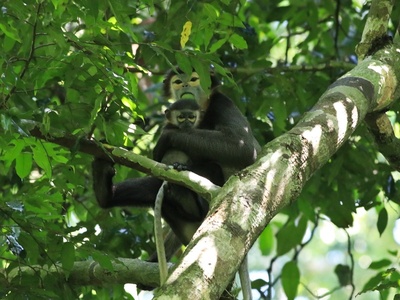
Black‑shanked douc
A colorful, long‑limbed leaf‑eating monkey with striking facial markings. Heavily hunted and losing forest habitat. Notable as one of Vietnam’s most visually spectacular primates.
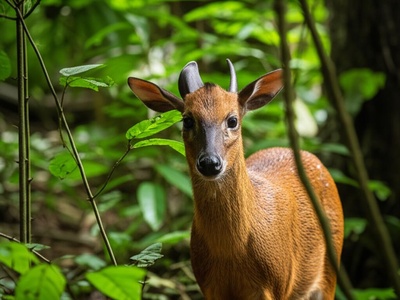
Vu Quang muntjac
A small deer with short antlers and secretive habits. Threatened by intense hunting and habitat change. Notable as a species discovered in the 1990s from the Annamite forests and poorly known.
